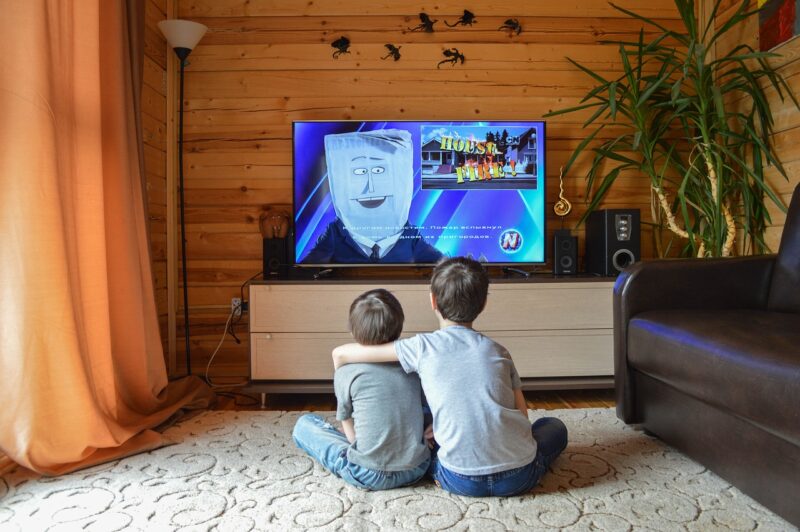Binge-Worthy: The TV Series That Changed the Face of Entertainment Forever
November 18, 2024

Television has undergone a monumental transformation over the past two decades, evolving from a traditional leisure activity to a cultural phenomenon characterized by the rise of binge-watching. In this article, we’ll explore the TV series that not only captured the hearts of audiences but fundamentally changed the way we consume entertainment. We will delve into how certain shows influenced viewing habits, storytelling techniques, and the industry itself, setting the stage for a new era of television.
1. The Birth of the Binge-Watch Phenomenon
The concept of binge-watching—consuming multiple episodes of a TV series in one sitting—gained traction with the rise of streaming services like Netflix, Hulu, and Amazon Prime. But it can be traced back to the late 1990s and early 2000s when DVD box sets allowed viewers to enjoy seasons of their favorite shows in succession.
As users became accustomed to watching entire seasons in a single weekend, networks began to adapt their strategies, premiering entire seasons at once. This shift has dramatically altered how shows are produced, marketed, and consumed.
2. Key Series That Redefined TV Engagement
Several shows stand out as milestones in this new era of television, fundamentally reshaping the medium:
- ‘The Sopranos’ (1999-2007): Widely regarded as one of the greatest television series of all time, ‘The Sopranos’ set the standard for complex character development and multi-layered storytelling. It introduced the concept of the antihero, creating audience empathy for characters who were deeply flawed yet relatable. This paved the way for similar narratives in shows like ‘Breaking Bad’ and ‘Mad Men.’
- ‘Lost’ (2004-2010): With its intricate plotlines and cliffhanger endings, ‘Lost’ kept fans guessing and created a dedicated online community engaged in analyzing every twist. The series demonstrated how interactive engagement could be leveraged to build anticipation and keep viewers hooked—an influence that resonates with many modern series today.
- ‘Breaking Bad’ (2008-2013): This series redefined character arcs and moral complexity. Walter White’s transformation from a mild-mannered chemistry teacher to a ruthless drug lord resonated deeply with audiences, showcasing how storytelling could be both captivating and thought-provoking. Its success further established the trope of the antihero in television narratives.
- ‘Game of Thrones’ (2011-2019): This series became a cultural juggernaut, bringing high production values and large-scale storytelling to television. With its unpredictable plot twists and intricate political scheming, ‘Game of Thrones’ created a viewing experience that encouraged binge-watching, leading to widespread discussion and analysis across social media platforms.
- ‘Stranger Things’ (2016-present): This nostalgic homage to 1980s pop culture and science fiction introduced a new generation to binge-watching. Its success on Netflix underscored the platform’s model of releasing entire seasons at once, driving viewers to consume content in its entirety while sparking widespread fandom and merchandise opportunities.
3. How Streaming Services Changed the Game
The introduction of streaming services has disrupted traditional television models. Platforms like Netflix, Hulu, and Amazon Prime do not rely on advertisements, allowing for a different type of storytelling that prioritizes narrative depth and character development over commercial breaks. This shift has afforded creators greater freedom and has encouraged the production of limited series that offer unique, compelling stories.
Additionally, the algorithms of streaming services use viewer data to inform content production and recommendation systems, creating a personalized viewing experience. The instant availability of full seasons allows viewers to curate their own viewing schedules, contributing further to the binge-watching trend.
4. The Impact on Content Creation
The evolution of television consumption has led to significant changes in how shows are developed and produced. Here are some influences on content creation:
- Shorter Seasons: Many contemporary shows have shifted to fewer episodes per season (often eight to ten) while sustaining high production quality, allowing more targeted story arcs and deeper character exploration.
- Diversity of Storytelling: There has been a push for more diverse voices in storytelling, as platforms seek to cater to a wider audience. Shows featuring different cultural perspectives and experiences contribute to a richer tapestry of narratives available to viewers.
- Increased Competition: As more streaming services emerge, competition for viewers’ attention has intensified. This has led to not just more quality content but also innovative creative ideas as studios constantly strive to differentiate their offerings.
5. The Influence of Social Media on Television Viewing
In our digital age, the rising influence of social media upon television viewing cannot be overstated. Fans actively engage in discussions about their favorite shows, fostering communities through platforms like Twitter, Instagram, and Facebook. Viral moments from episodes fuel discussions, where memes and fan theories proliferate.
This interactivity allows shows to sustain audience engagement beyond their run time and create a sense of community among viewers, making it an integral part of the modern viewing experience.
Conclusion: The Future of Binge-Worthy Television
Television will continue to evolve as technology and audience preferences shift. The binge-watch phenomenon has indelibly influenced how stories are told and experienced, connecting viewers around the globe like never before. Understanding the transformative power of influential series helps us appreciate the medium’s potential and challenges—insights that will shape the future of entertainment for years to come.
As viewers continue to seek content that resonates with them, the possibilities for innovation and storytelling remain limitless. With a steady stream of compelling narratives, the future of binge-worthy television holds great promise for audiences and creators alike.






